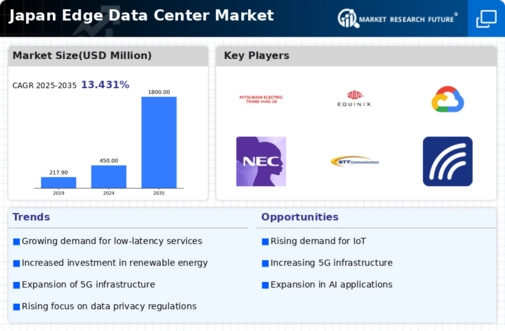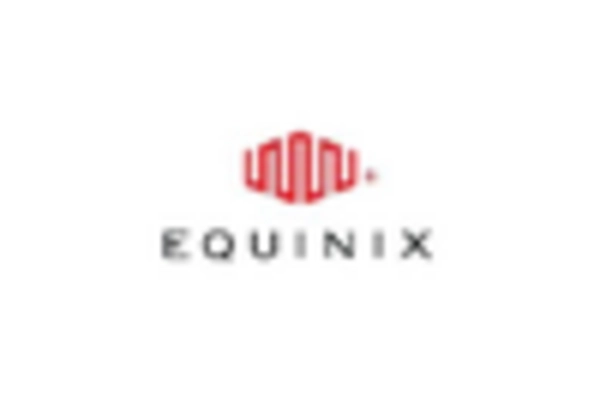Emergence of Smart Cities
The development of smart cities in Japan is creating new opportunities for the edge data-center market. As urban areas become more interconnected, the demand for real-time data processing and analytics is growing. Smart city initiatives often rely on edge computing to manage vast amounts of data generated by sensors and IoT devices. This reliance on localized data processing solutions is expected to drive investments in edge data centers, as municipalities and private enterprises seek to enhance urban living through technology. The edge data-center market is poised to play a pivotal role in supporting these smart city projects.
Increased Data Consumption
The edge data-center market in Japan is experiencing a surge in demand driven by the exponential growth of data consumption. With the proliferation of IoT devices and the expansion of 5G networks, data generation is expected to increase significantly. Reports indicate that data traffic in Japan could rise by over 30% annually, necessitating the need for localized data processing. This trend compels businesses to invest in edge data centers to ensure low-latency access and efficient data management. As organizations seek to enhance user experiences, the edge data-center market becomes a critical component in addressing these challenges, allowing for real-time data processing and analytics.
Rising Cybersecurity Concerns
As cyber threats continue to evolve, the edge data-center market in Japan is witnessing increased attention towards cybersecurity measures. Organizations are becoming more aware of the vulnerabilities associated with centralized data storage and are seeking to mitigate risks by adopting edge computing solutions. By processing data closer to the source, businesses can enhance their security posture and reduce the potential attack surface. This trend indicates a growing recognition of the importance of cybersecurity in the edge data-center market, prompting investments in advanced security technologies and protocols to safeguard sensitive information.
Government Initiatives and Support
The Japanese government is actively promoting the development of digital infrastructure, which includes the edge data-center market. Initiatives aimed at enhancing connectivity and digital transformation are likely to provide a favorable environment for edge data centers. For instance, the government has allocated substantial funding to improve broadband access and support technological advancements. This support is expected to stimulate investments in edge data centers, as businesses look to align with national strategies for digital growth. The edge data-center market stands to benefit from these initiatives, potentially leading to a more robust and competitive landscape.
Shift Towards Decentralized Computing
There is a noticeable shift towards decentralized computing in Japan, which is significantly impacting the edge data-center market. As organizations move away from traditional centralized data centers, they are increasingly adopting edge computing solutions to enhance operational efficiency. This transition is driven by the need for faster data processing and reduced latency. The edge data-center market is likely to see a rise in demand as businesses recognize the advantages of localized data processing. This trend may lead to a more agile and responsive IT infrastructure, enabling companies to adapt quickly to changing market conditions.

















Leave a Comment